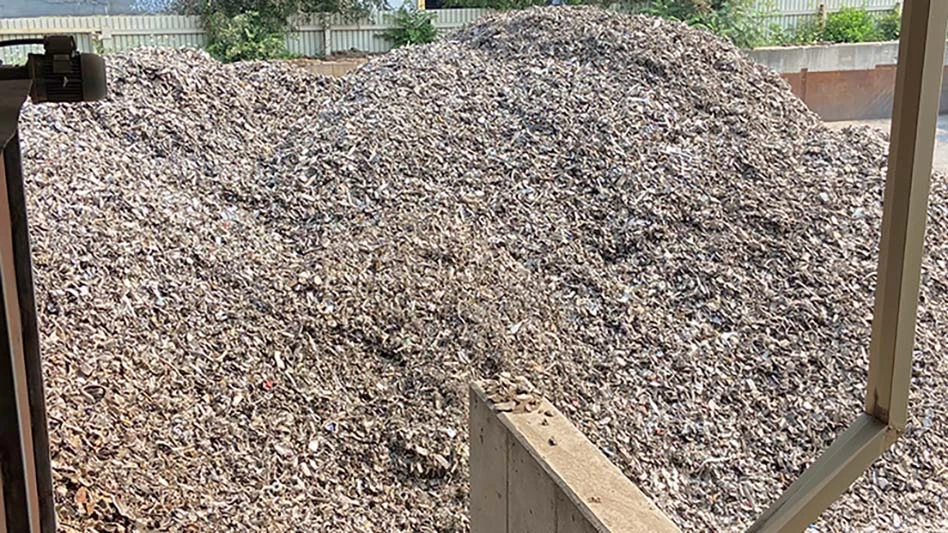

At last year’s WasteExpo, we introduced the world to Max-AI® technology and launched the Max-AI AQC (for Autonomous Quality Control). Customers around the globe responded, and, as of today, we’ve sold nearly 50 AQC units to customers around the globe. We are thrilled that the market has welcomed Max, but the AQC is just the start of Max’s story.
Max-AI is much more than robotic sorting and is ushering in a new era of MRF intelligence and automation. As we approach this year’s largest waste and recycling exhibitions, WasteExpo and IFAT, we’re excited to announce new solutions that take advantage of our breakthrough technology: The Max-AI Visual Identification System (VIS) and the Total Intelligence Platform.

Max-AI Technology and the AQC
Before we introduce the new products, let’s briefly review the technology. Max-AI identifies recyclables similarly to how a person does. Using a camera to “see” and neural networks (based on the structure of the brain) to “think,” Max can identify materials on a conveyor belt in real time. The rise of artificial intelligence (AI) and advancements in computer processing have made this possible.
It’s an incredible leap forward for an industry that has been reliant on expensive sensors to identify materials in a way that is far more limited than the identification and decision-making abilities of Max-AI. So that’s the technology – Max can identify what’s there just like a person is able to. From there, it’s all about using this information.
The AQC was the first product to make use of Max’s intelligence. Max sees what is on the belt and makes decisions – in this case, telling a robotic sorter what to do. Pick “item X” and place into “chute 1” before picking “item Y” and placing into “chute 2.” These decisions lead to smarter and faster picks than a person is able to make.
Sorting items at speeds of up to 65 picks per minute, the AQC compliments our NRT optical sorters to create a completely autonomous product recovery, void of manual quality sorting of containers and paper. As our ads say, the results are direct and impactful: “Clean Containers. Clean Fiber. No Labor.” It hasn’t taken our

Visual Identification System (VIS)
This year I’ve learned that robots get all the attention. I get it and I agree – robots are cool! But when it comes to our Max-AI technology, the robot is just a tool and the AQC is really just the beginning. We are working towards fully autonomous and intelligent MRFs, and the Visual Identification System (VIS) is a key piece of the solution.
VIS uses the same technology as the AQC, but without the robotic sorting. Max is at work in VIS to identify
Imagine an operator able to know exactly the material entering and exiting a system. This operator could say, “My PET bunker is 99.6% PET, 0.2% mixed plastics and 0.2% residue,” for example. Or, “We’ve seen a 6% increase of 3D OCC on our container line this year compared to last year.” Or, “ “This month we’ve seen a 90% decrease of aluminum in residue compared to last month – if this trend continues, the adjustments we made will have a positive ROI in three months’ time.”
Max-AI technology is able to make identifications that other equipment can’t. For example, PET containers vs. other PET, or food-grade plastics vs. non-food grade. Right now, our first AQC at Athens Services Sun Valley MRF is removing PET trays from CRV (California Refund Value) PET and is greatly improving the value of those bales.
However, with a high-speed version of VIS installed on the optical sorter’s infeed belt, it wouldn’t have to. The optical sorter will identify and eject PET because it’s made of PET, but Max can determine which objects are bottles and communicate with the optical sorter to make sure that only bottles are recovered. This is just one example of how Max will enhance the capabilities and profitability of MRFs in the near future.

Total Control. Total Intelligence.
Max gives us information. The AQC uses a robotic sorter to act on this information. Our new Total Intelligence Platform compiles, analyzes, and communicates this information to decision makers. It’s a business intelligence software that makes the scenarios mentioned above possible – optical sorters and VIS can track object counts, but the Total Intelligence Platform provides graphs, charts and trending information that
Max’s intelligence is an input into the Total Intelligence Platform, but the platform provides information on the entire operation in a user-friendly interface. 3D views of the system and machine centers guide our customers through navigation, and these views dynamically change based on what is selected or what is happening in the MRF. For example, if the system is baling HDPE, that bunker and the baler infeed will make that visibly obvious and provide information on the status of that operation.
The platform also gives operators real-time information that will promote uptime, including visual indicators that show the status and trending data for every motor in the plant. The platform provides the metrics that are important to our operators, including
Our deep commitment to innovation
As we look to the future of recycling, we see waste management companies, recyclers
Learn more about Max-AI, the AQC, VIS and the Total Intelligence Platform from your BHS team member, by visiting with us at WasteExpo or IFAT or by watching the video below.

Get curated news on YOUR industry.
Enter your email to receive our newsletters.

Explore the April 2018 Issue
Check out more from this issue and find your next story to read.
Latest from Recycling Today
- Ship dismantlers navigate new regulatory regimen
- Gershow announces several community involvement projects
- McKinsey identifies engineering polymers as a recycling opportunity
- Metso acquisition focuses on mill liner recycling
- Malaysian customs office seizes scrap containers
- Lindner establishes Brazil subsidiary
- Tire recycling veteran predicts growth in pyrolysis
- ShearCore adds FC95 to concrete processor line





